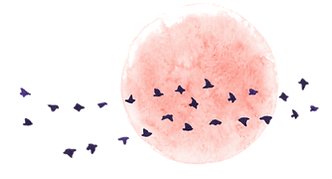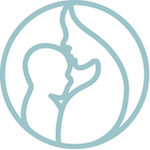Positive Body Awareness
Andrew Cook MSc RCST
Transformational Bodywork
 Babies and eye contact
Babies and eye contact

Making eye contact is a critical part of early baby development.
Babies all develop at a sligtly different rate. But generally speaking a new-born baby starts off having to adapt to a whole new world of sensations and different sensory stimuli. It is no longer part of its mothers body (even though it takes a typical baby some 6 or 8 months to realise it is not a physical part of its mother). And there is a lot more light and light contrast, and a lot of colours. Smell also works differently, and hunger (which was not present in the womb) is another new sensation.
It's initially difficult making sense of the world, and there are certain simple visual patterns that must be hard-wired into the brains of all animals - so all mammalian babies recognise dark dots - particularly pairs of dark dots - as having important survival meaning. This is one of the things that draws them towards finding the nipples and noticing eyes. Milk also has a smell, so nipple dots are qualitatively different from eye dots; and rather than offering physical sustenance (milk) eyes offer emotional and relational sustenance - connection. This should ALSO be available through physical contact. Physical touch (skin contact) along with the mother's specific smell is very powerful in its own right, and there are many anecdotal accounts of very ill or premature babies survivig against the odds when given simple prolonged skin contact. But relationality occurs on many levels at the same time, and all mammalian babies seek eye contact because - on a simple survival level - adult eye contact tells them that they will be cared for. Refusal of eye contact (from the adult) is a biological signal that they will not be cared for (and therefore will die). So eye contact for a baby is not trivial - it is literally a matter of life and death. In this way, the three ingredients skin contact, provision of food, and eye contact make up the basics for survival for a new-born baby. A baby that does not make eye contact is in great difficulty, and is essentially frightened that adult support (i.e. life-support) might be withdrawn.
The quality of adult presence adds substantially to this baseline, and is important, but really should also be considered to be the icing on the cake, because the circumstances of life are not always so easy. We have evolved to survive the harshest of circumstances, and babies and children are also capable of being tough and adapting and making the very best of whatever they find themselves in. Babies can feel that they are loved - but that leads to a very tricky question - what is the love that they can sense (other than providing food and shelter)? The answer is very simple - Love is being able to enjoy someone's presence... We feel a sense of pleasant enjoyment inside ourselves - in our bodies - as a kind of emotional response. If we feel that invisible but recognisable joyful glow inside ourselves in response to the baby, the baby is aware of that. Babies also like the adults looking after them to feel "solid" and "present". Which essentially means not being pulled into the baby's distress (or any other distress for that matter) and being aware of your own body to some extent. A very simple way to do that is to put your attention on the sensation of the chair or the floor, and your breath - and when that awareness has stabilised, to let a little bit of it go so you are also more aware of the baby - but also aware of the breath/whatever is physically supporting you. This is not a miraculous cure for colic, but I have seen many babies respond very positively to it, and have seen many parents feel more able to deal with a distressed baby - by this simple shift in attention. Please note that colic is treatable(!), and I also run workshops teaching these attention skills in more depth.




<< ¦ Top ¦ Menu ¦ Front page ¦ Body-Mind ¦ CST/Clinic ¦ Contact ¦ Site Map ¦ Search
all content © Andrew Cook, Norwich UK, 2021



